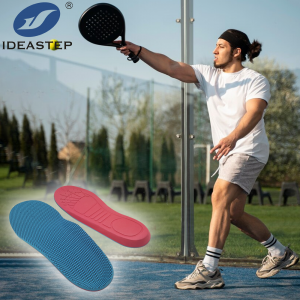
When it comes to athletic insoles, there are a variety of materials to choose from, each with its own unique benefits and drawbacks. One material that has gained popularity in recent years is EVA (ethylene-vinyl acetate), which is known for its lightweight, flexible, and shock-absorbing properties. But is EVA material a good fit for athletic insoles? Let’s explore the pros and cons of using EVA insoles for athletic activities.
Pros of EVA Insoles for Athletics
There are several benefits to using EVA insoles for athletic activities, including:
- Lightweight : EVA insoles are extremely lightweight, making them ideal for high-impact sports such as running and jumping.
- Flexible : EVA material is very flexible, allowing it to conform to the shape of the foot and provide a customized fit.
- Shock Absorption : EVA insoles absorb shock and reduce pressure on the feet, providing superior cushioning.
- Moisture Management : EVA material promotes air circulation and moisture wicking, reducing sweating and odor.
- Affordable : EVA insoles are generally more affordable than other materials, making them a great option for budget-conscious consumers.
Cons of EVA Insoles for Athletics
While EVA insoles have many benefits, there are also some potential drawbacks to consider, including:
- Limited Support : EVA insoles do not provide the same level of support as other materials, such as carbon fiber or memory foam.
- Less Durable : EVA insoles are less durable than other materials, and may need to be replaced more frequently.
- Limited Customization : EVA material can be molded and shaped to fit specific foot shapes, but it cannot be customized as much as other materials.
- May Not Be Suitable for All Foot Types : EVA insoles may not be suitable for all foot types, especially those with high arches or flat feet.
Conclusion
Overall, EVA insoles can be a good fit for athletic activities, particularly for those who require a lightweight, flexible, and shock-absorbing insole. However, it’s important to consider the potential drawbacks, such as limited support and durability, and determine whether EVA insoles are the best fit for your specific needs. If you have high arches or flat feet, you may want to consider another material that provides more support and stability.
Expand more related content: Sports Insoles.
